The West Highland Way is one of the UK’s most loved long-distance hiking trails and a firm favourite among hikers who want to experience Scotland’s beautiful landscapes. This also means it can be busy, and booking your accommodation or your tour early is important, as most tours and accommodations sell out.
Leaving from the outskirts of Glasgow and going to Fort William, the West Highland Way covers a variety of classical Scottish scenery, from green pastures to the beautiful Loch Lomond, to expansive views across the Highlands. With cozy pubs, rustic villages and whiskey distilleries along the way, walking the West Highland Way promises a heart-warming introduction to Scotland’s culture and countryside.
The West Highland Way is 96 miles (154 km) long can be hiked in anything from 6 to 9 days, though this guide recommends 8 days walking.
The basics of the West Highland Way
Closest Major City: Glasgow
Start: Milngavie, a 40-minute bus ride from Glasgow airport.
End: Fort William. From Fort William, catch a train back down along scenic stretches of the West Highland Way to Glasgow, and get a connecting bus to the airport.
Accommodations: Wild camping is permitted on the West Highland Way. There are also many bed and breakfasts along the route. Accommodations book out well in advance, so book early.
Costs: Expect to spend about €700 without flight costs if you organize this yourself, sleeping in basic B&B’s and using baggage transfer services. You can also hire a tour company to arrange everything for you.
Length: 96 miles (154 km)
When to go: May-June, September-October

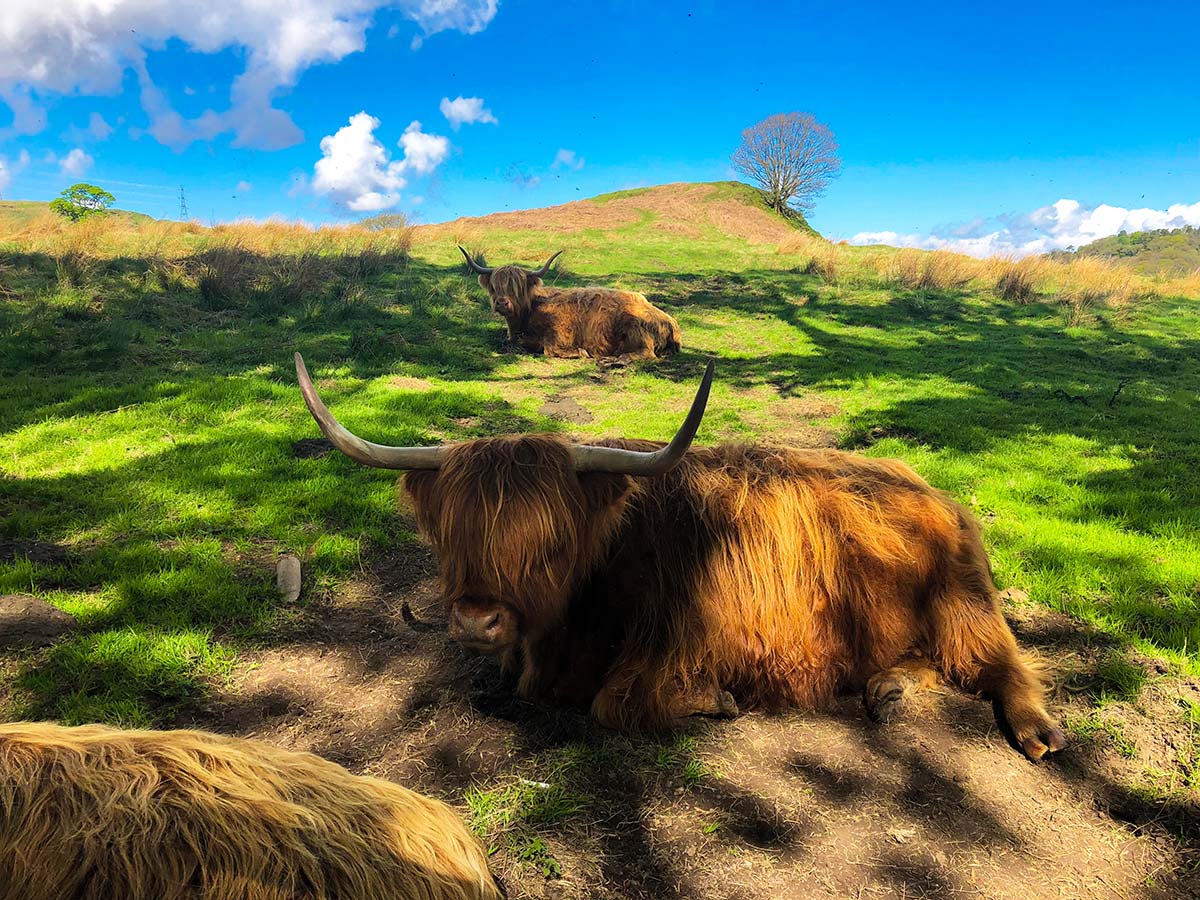
Getting to the start of the West Highland Way
From Glasgow, which can be reached by train or plane, there are bus and train connections to the smaller town of Milngavie (pronounced “Mull-guy” if you’re asking for directions). The West Highland Way begins in Milngavie’s town center, at the West Highland Way obelisk.
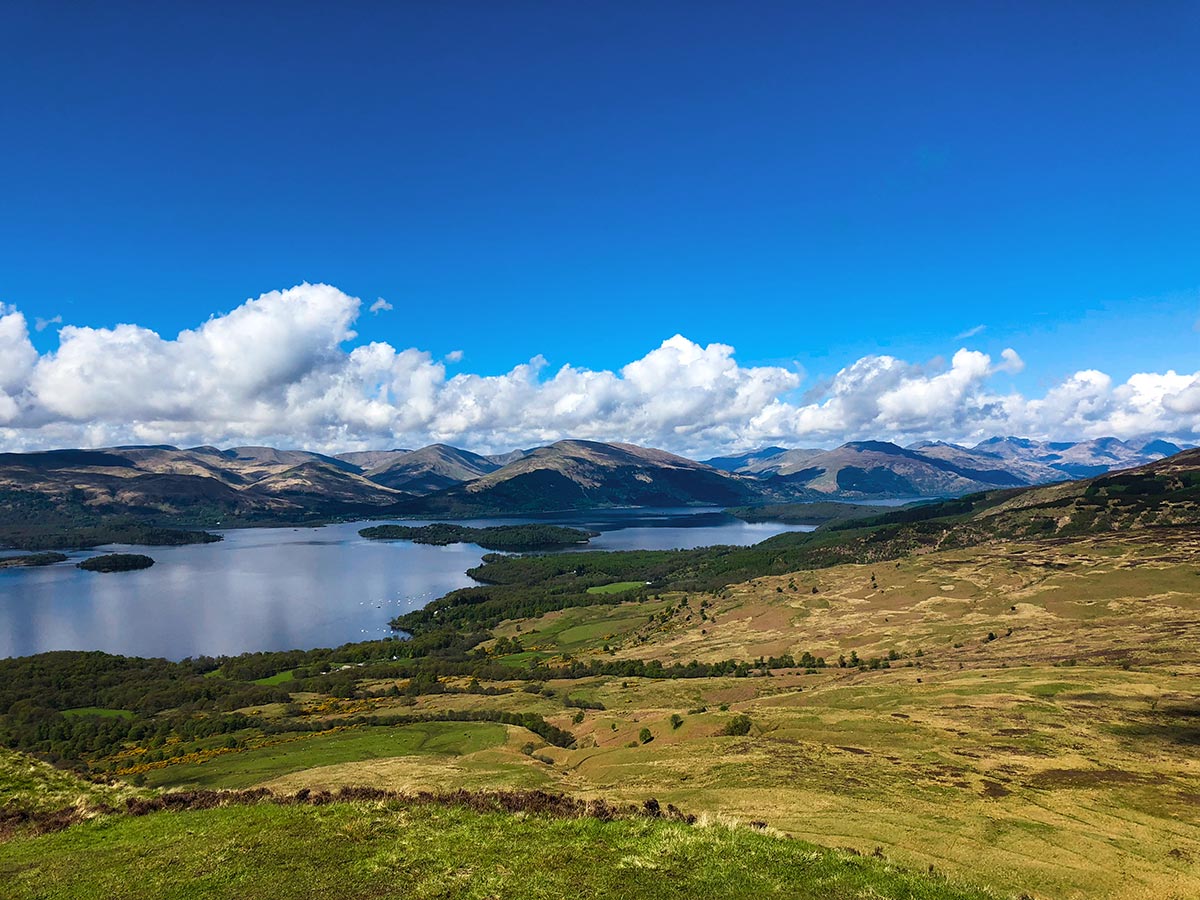
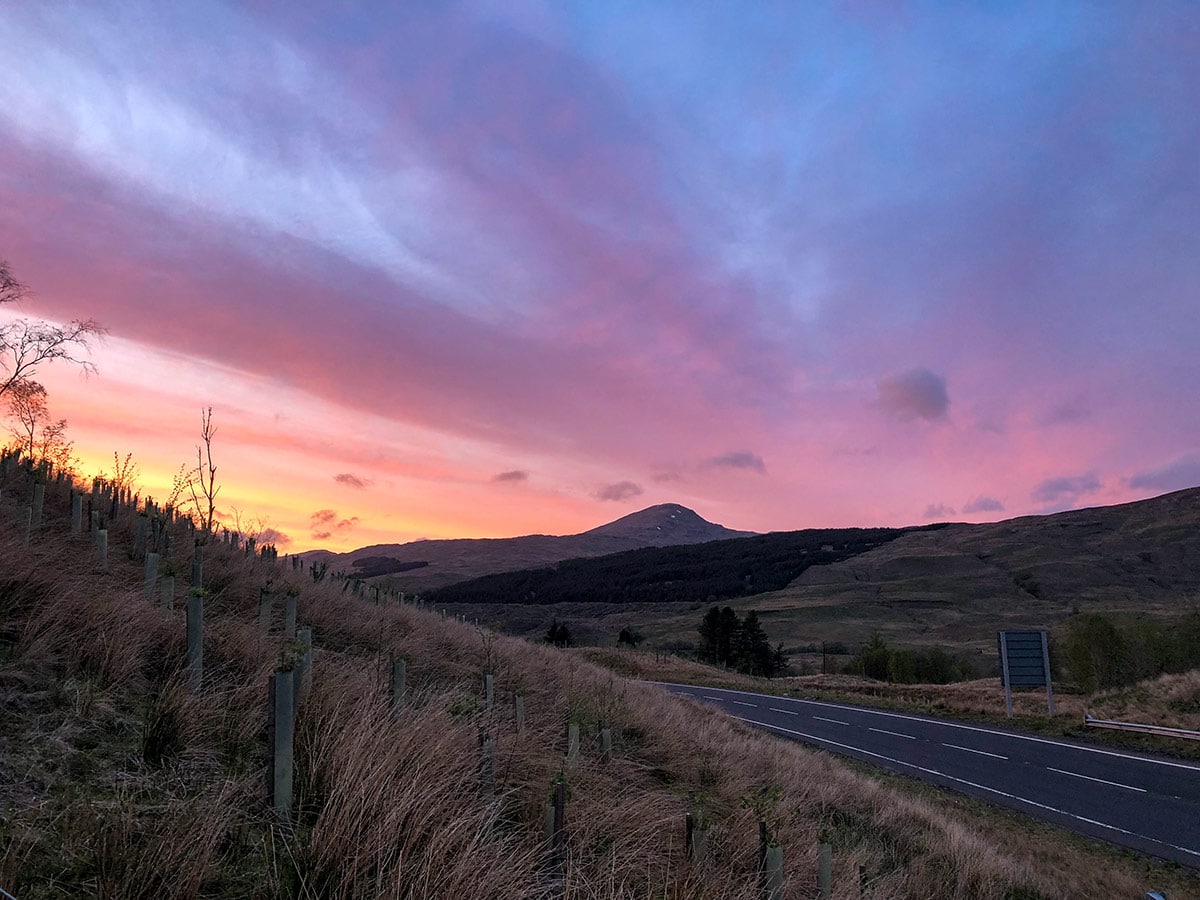
Route of the West Highland Way
Map of West Highland Way Trek
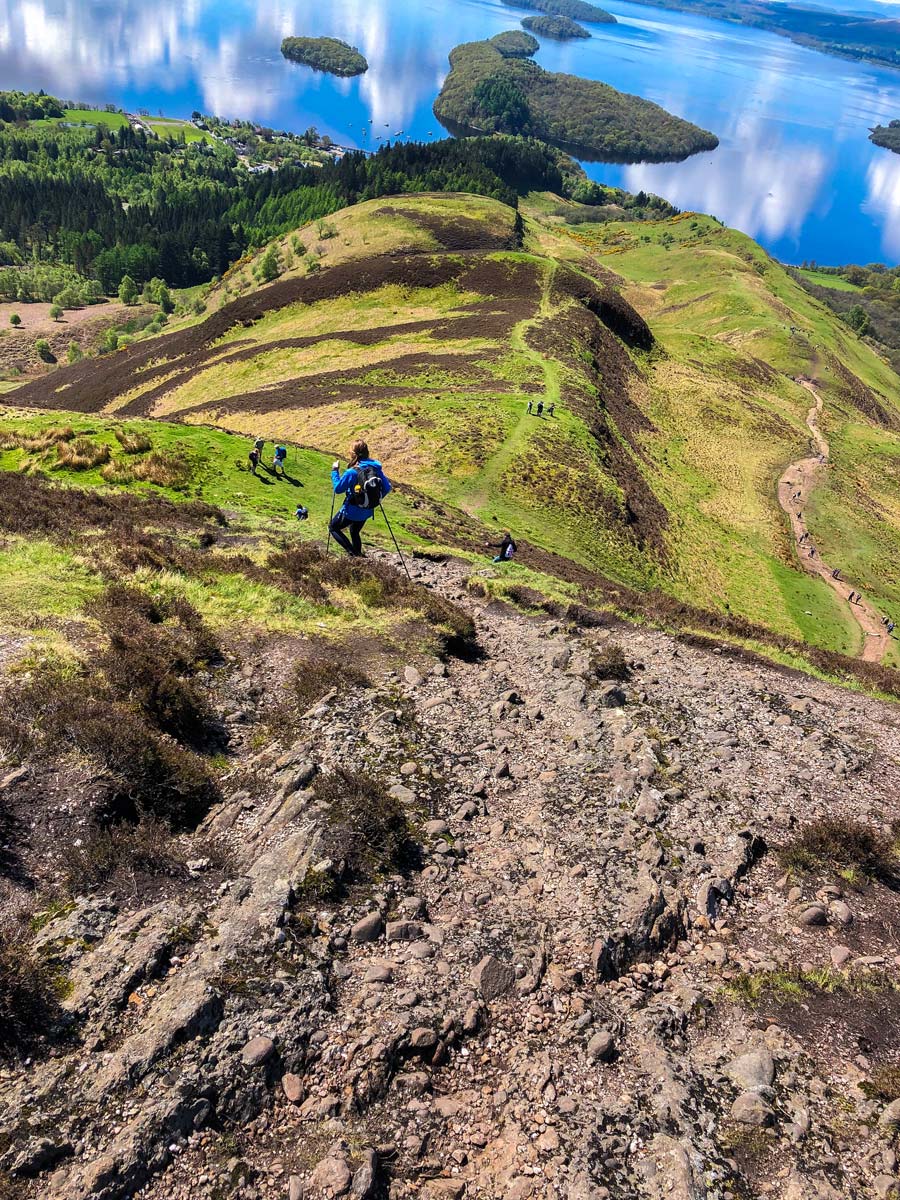
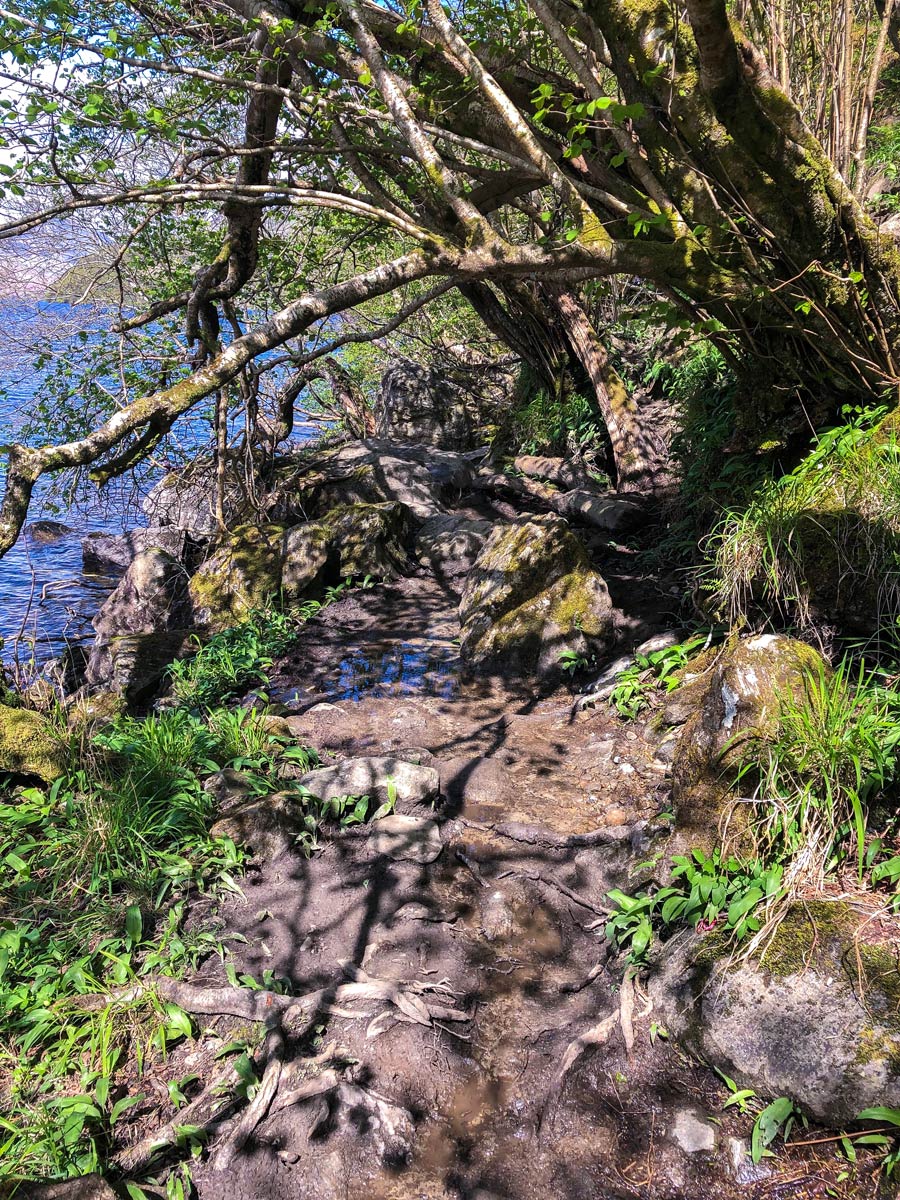
Day 3: Rowardennan to Inverarnan
Length: 13 3/4 miles (22 km)
Time to walk: 6-6.5 hours
This section of the West Highland Way is known to be tricky for its technicality but turned out to be one of my favourites on the trail. Leading first through a tall pinewood and then back along the edge of Loch Lomond, this section of the West Highland Way requires stepping over roots and big rocks to clamber up and down along the trail. A certain light-footedness is beneficial while finding a grip. There was a noticeable pack-weight-to-happiness ratio between how much hikers enjoyed this section and how heavy their packs were. My friend and I walked with daypacks and found our footing more easily than people who carried all their gear.
Shortly before Inversnaid the trail passes lovely waterfalls which run into the Loch, which the trail will soon leave behind. The section from Inversnaid to Inverarnan used to be known as the hardest section of the hike but has had numerous improvements to the trail since the 1990’s.
In Inverarnan, it’s worthwhile to cross the stream over to The Drover’s Inn, an atmospheric and supposedly haunted hotel with an impressive taxidermy collection.
Day 4: Inverarnan to Crianlairch
Length: 6 1/2 miles
Time to walk: 4 hours
This shorter section of the West Highland Way features a classic view – splendidly situated remains of an old farmhouse and bothy (shelter) next to a small lake. Here the landscape starts to open up into vast views with tall hills in the distance. The highlands are nearing!
Crianlairch marks the half-way point of the hike with most of the difficult hiking left behind, but prepare for a few more sweats and tricky spots along the way.
Day 5: Crianlairch to Bridge of Orchy
Length: 13 1/4 miles (21.3 km)
Time to walk: 7 hours
From Crianlairch the West Highland Way leads through a wood and to the small village of Tyndrum, with its Green Welly service station, where walkers can purchase a warm meal and outdoor gear or souvenirs at a small shop.
As you pick up the trail after lunch, the landscape has now truly changed into the Scottish Highlands, as you walk through wide glens and slowly past large, isolated hills, with a magnificent approach toward Beinn Dorain. From here on the route is fairly straight, providing a sense of openness and freedom as you advance through the expansive scenery.
The Bridge of Orchy Hotel marks the end of this section and has a lovely restaurant with a balcony for those still hungry for views.
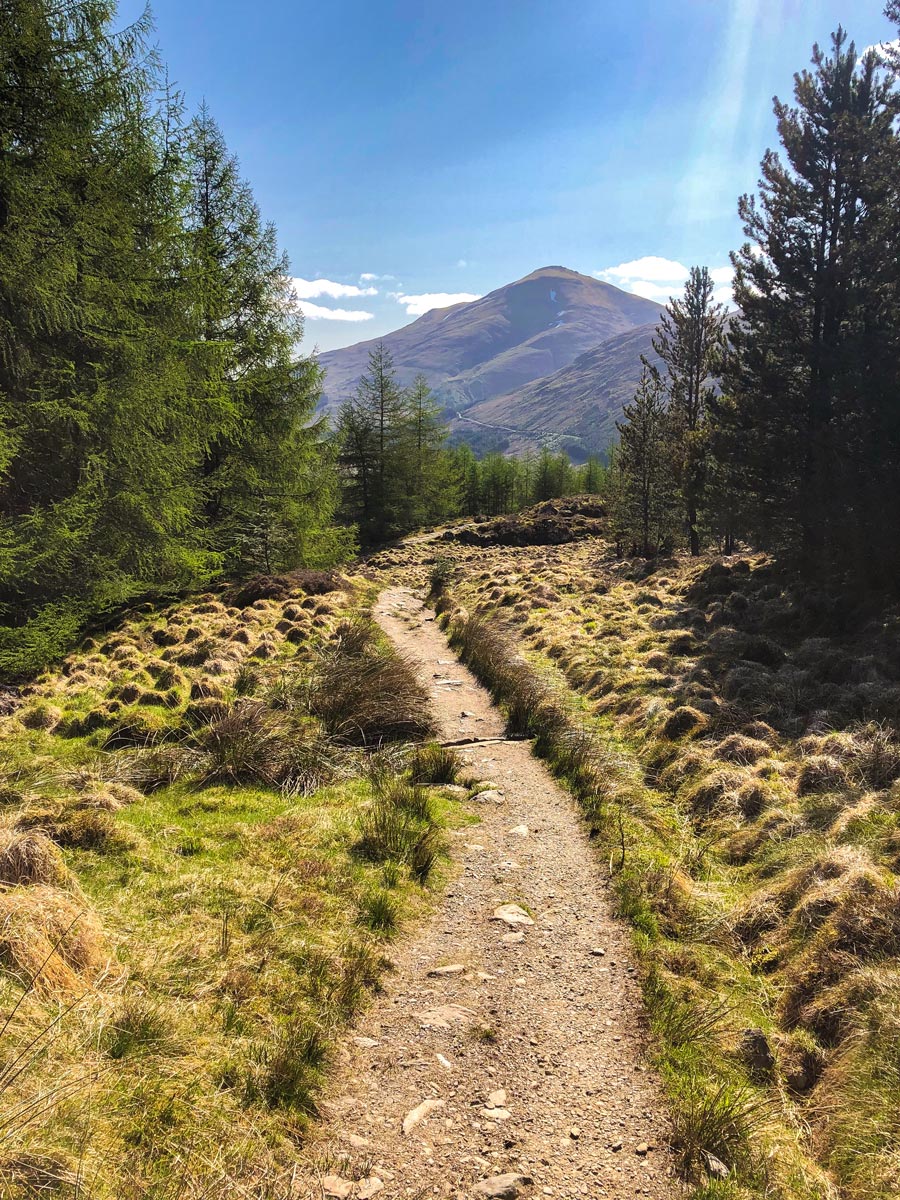

Day 6: Bridge of Orchy to Kingshouse
Length: 12 miles (19.4 km)
Time to walk: 5-6 hours
This is the most isolated section of the West Highland Way, and the scenery can start to feel slightly lunar. While this section promises incredible views, it also offers little respite from whatever the weather brings. You’ll find no shade or opportunity to duck away from wind or rain along the route today. However, sights across small lochs, few isolated houses, and a forest lodge invite for ample daydreaming material of Scottish myths and legends.
Shortly before Kingshouse Hotel, where this section ends, you’ll come across Glencoe Mountain Resort, a ski station which seems to appear out of nowhere, a toasty-warm and well-priced rest spot and return to civilization’s comforts.
Day 7: Kingshouse to Kinglochleven
Length: 8 3/4 miles (14 km)
Time to walk: 4-5 hours
The second last stage of the West Highland Way is comparatively short but includes the steepest ascent – the Devil’s Staircase. The walk begins along an old military road through Glen Coe, which is famous for a bloody battle that took place here in 1692. Certainly, one of the more dark and atmospheric sections of the trail, the menace of the highlands from centuries ago can still be felt here today. After the climb up the somewhat over-zealously named Devil’s Staircase, the path continues through a heather-filled vast landscape. The descent into greener Kinglochleven again feels like a return to planet Earth.
Day 8: Kinglochleven to Fort William
Length: 14 miles (22 km)
Time to walk: 7-8 hours
From the larger town of Kinglochleven, climb back up into the highlands for the final stretch across rocky footpaths through open glens. The Lairig Moor along the route is another point where the hardship of the lives of people centuries ago can be vividly imagined. In fact, one of the most famous Scotsmen of all time, Macbeth, King of the Scots from 1040 to 1057, is said to have resided on an island on Lochan Lùnn Dà-Bhrà, which lies west of the trail near Blar a’ Chaorainn, about half-way through the day’s walk.
Another Scottish celebrity can be spotted along this section of the trail – Ben Nevis, Britain’s highest summit. The final part of the walk leads through a forest, reminding walkers of the early stages of the trek, before descending into Fort William.

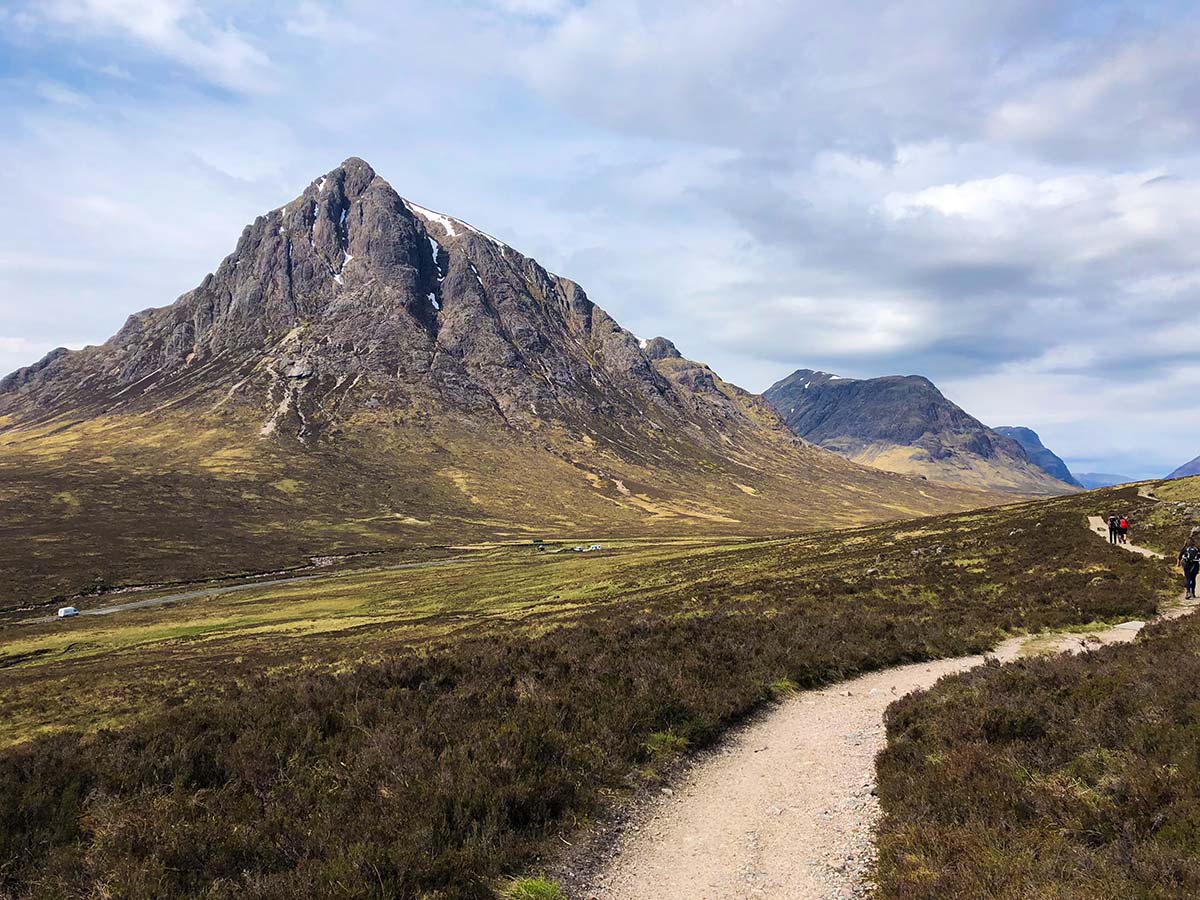
Accommodation on the West Highland Way
Wild camping is allowed in Scotland, so the West Highland Way is inviting for backpackers to carry and sleep in their own shelter. There are also numerous hotels and charming bed and breakfasts along the route, which are all sure to offer a cozy bed, friendly hosts and a hearty breakfast before your day’s walk ahead.
There are plenty of baggage transfer services available which can be useful for walkers who prefer to walk with a smaller daypack. The unpredictable weather can also mean a slightly longer packing list, which may be easier to accommodate in transferred luggage than in your backpack.
Food on the West Highland Way
Scotland is known for its adventurous cuisine (haggis, anyone?), which can be found along the route at several restaurants and pubs, as well as more continental meal options. A hearty breakfast will be provided by most accommodations, who are keen to feed hikers a “cooked breakfast” before they set out for their walk. This means you can expect sausages, eggs, hash browns, bacon, tomatoes, mushrooms, and toast. Porridge is an equally warming and a slightly more healthy alternative.
There aren’t many supermarkets along the route, so it’s a good idea to stock up on hiking snacks before starting the trail.
Health on the West Highland Way
There is one major health issue of walking in Scotland – midges! For some people these are annoyances, for others, these little bugs can cause rashes. Midges are typically worst in summer, from June to August, but can also be seen in May and September.
We recommend a few ways to deal with midges on the West Highland Way:
- Cover up – bring light long-sleeve shirts, and maybe even a midge net for your head.
- Get midge repellent and use it.
- If you are camping, keep tents closed at all times to prevent midges from getting in at night and wreaking havoc!
Guide to Planning your UK Walking Holiday
Are you looking to experience the best walks in the UK? Have a look at these guides to the best walking in the UK
Articles on UK Trip Planning
- Lake District Camping Guide
- Planning your trip to the Chilterns
- Planning your trip to London, England
- Planning your trip the Lake District
- Planning your trip to Loch Lomond & the Trossachs
- Planning your trip to the Peak District
- Planning your trip to Snowdonia
- Planning your trip to the South Downs
- Winter Hiking in the Lake District


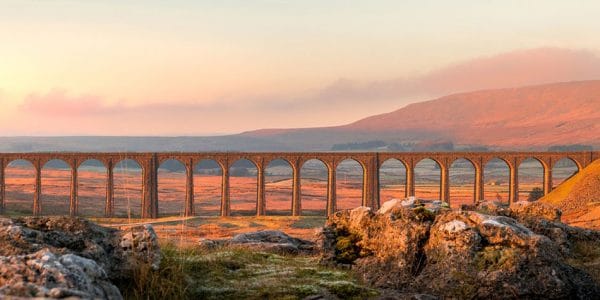
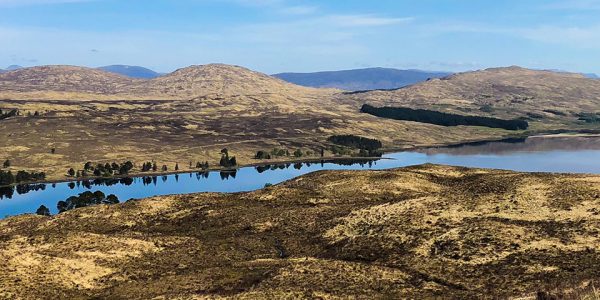
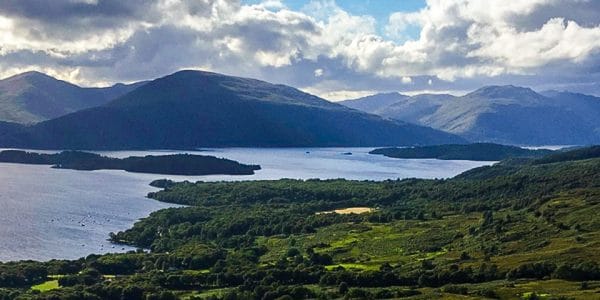
Comments